In this post, you will learn how to make a quintessential Ghanaian recipe — waakye. Waakye in simplicity is rice and beans cooked with sorghum leaves, which gives it a rich burgundy colour. On its own, it is traditionally vegan.
Waakye is a dish originally from the Northern part of Ghana. It is a loose translation of the Hausa phrase for beans. Traditionally, it is just white rice cooked with black eye peas and saltpetre/baking soda, which gives it a brownish colour. However, someone decided to add sorghum leaves along the way, and now everyone knows waakye to be a bright burgundy rice and beans dish.
What is special about Waakye?
Although on its own it is traditionally vegan, waakye is served with a variety of condiments that makes it a special reflection of Ghanaian cuisine. Waakye is usually served in plantain leaves and eaten with a lot of condiments. These condiments include tomato stew, shitɔ, coleslaw/salad, egg (because it’s a Ghanaian meal), spaghetti, which we call talia, gari (cassava couscous), kelewele, and cow skin or fried fish (obviously I don’t eat anything from an animal so the egg, cow skin and fish are a no for me). However, these condiments can be easily made vegan and make an incredible and fulfilling dish.
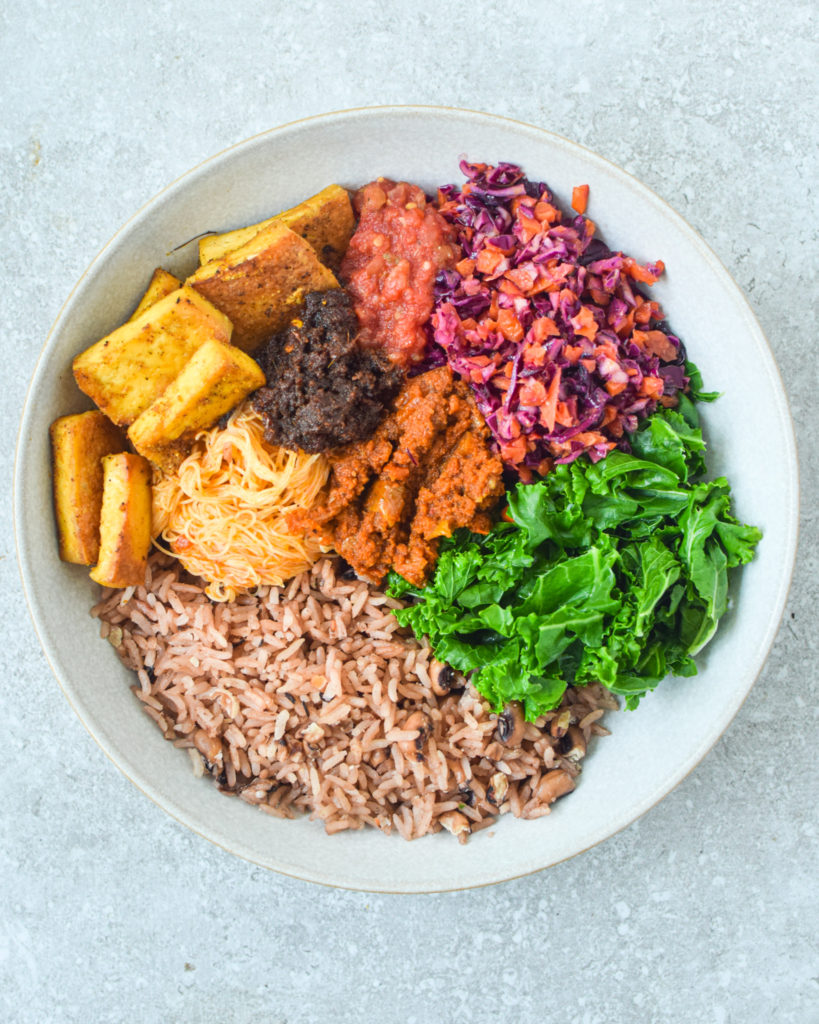
What will you need to make this dish?
- Beans: We usually use raw black eye peas. These are the indigenous bean variety in West Africa and sold in a lot of grocery stores.
- Sorghum Stalk: The stalk of the red sorghum variety that grows in Northern Ghana is full of antioxidants. When beans and rice are cooked in this, you get a very beautiful bowl of red rice and beans. Sorghum stalks are found in Ghanaian grocery stores but it is not required. As mentioned above, traditionally, waakye is not made with sorghum stems; however, if you can, please do use the sorghum stalks. It adds a lot of nutrients,
- Baking Soda/Salt Petre (Potassium Nitrate): Baking soda or Salt Petre is essential in this recipe. It makes the beans cook faster and softer. It also darkens the rice.
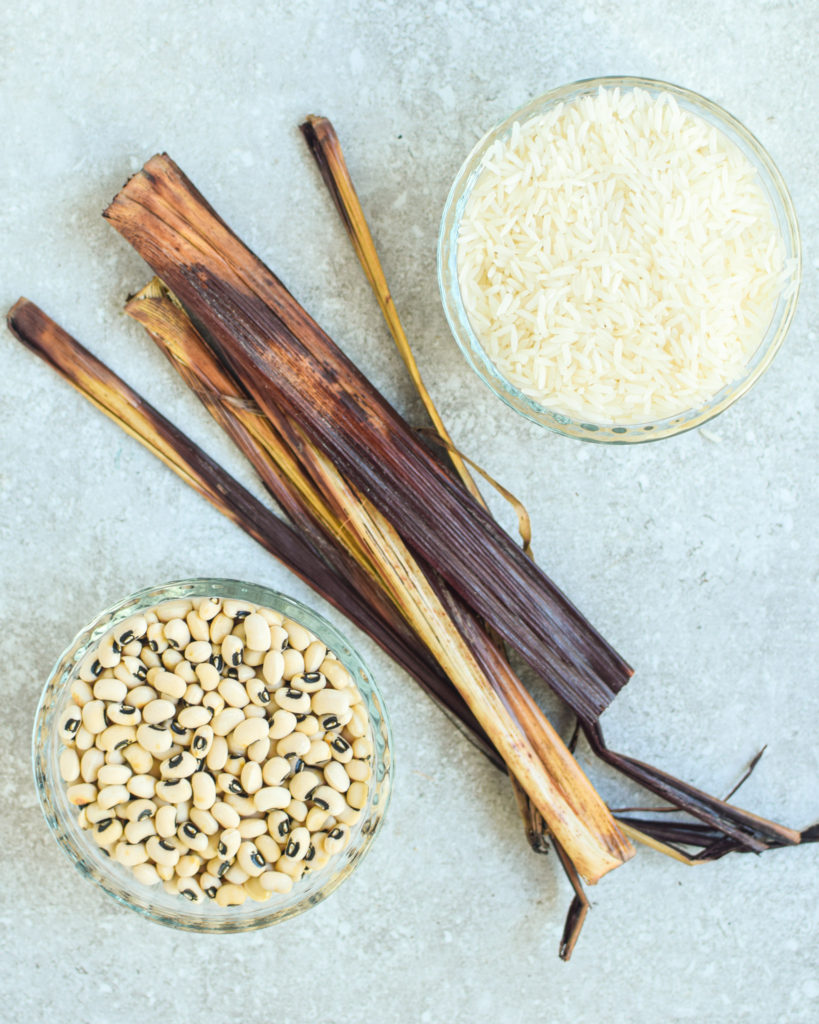
How to Make Waakye?
I came across a research paper (click here) from Ghanaian researchers on the variations of cooking time with the sorghum stem and saltpetre/potash to get the highest among of flavonoids (a group of antioxidants). From what they wrote, the optimal cooking method is to soak the leaves with saltpetre for 12 hours then cook the beans in this solution before adding the rice. Unfortunately, since sorghum stems are a precious commodity at home we cannot afford to soak the stems that long because we save it to use for multiple batches of waakye.
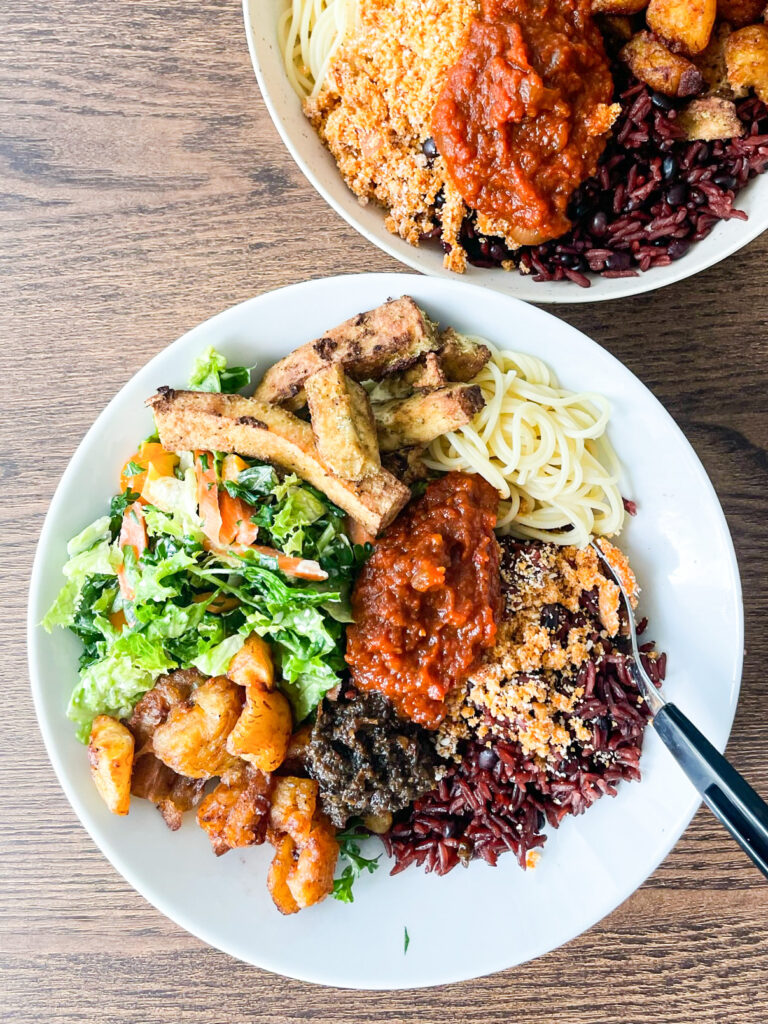
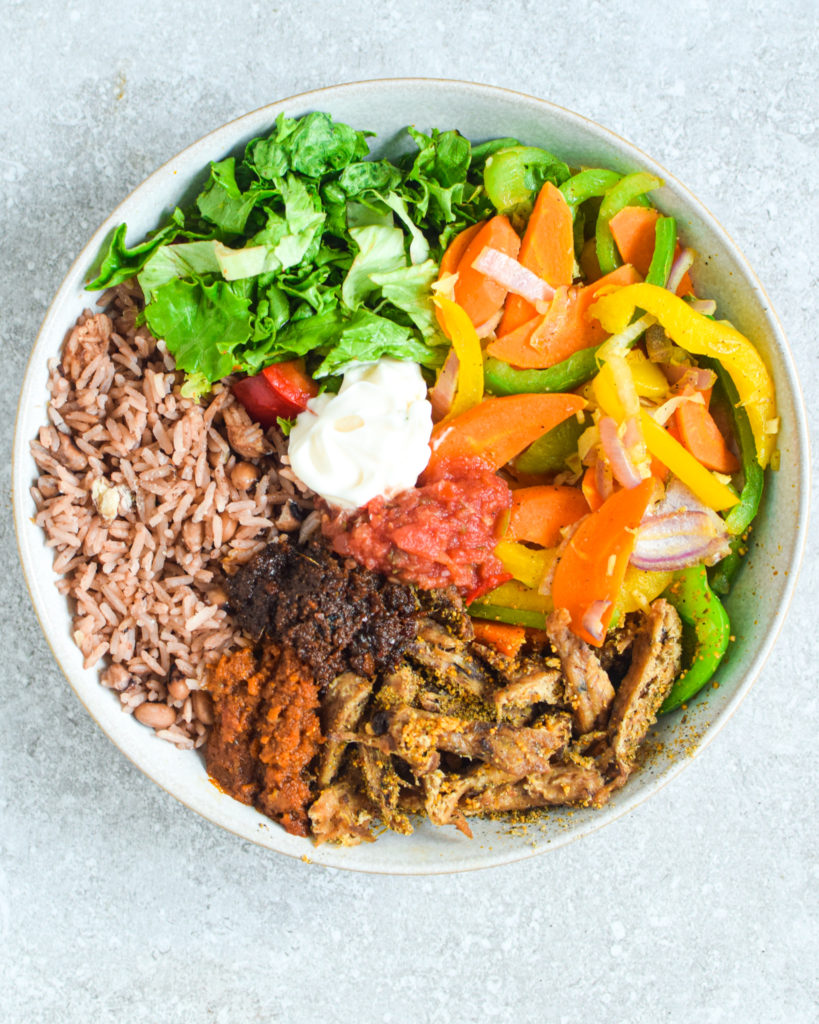
Making Waakye with Sorghum Stems
- The first step is to soak the beans overnight. Soaking overnight shortens the cooking time but it also starts the breakdown process for the phytonutrients that make beans hard to digest
- The next day, the beans are washed and cooked with sorghum stems and baking soda. Once the beans are halfway cooked, add in more water, the rice and salt to taste
- Cover and cook till done
Making waakye with Baking Soda
- Soak the beans overnight.
- The next day, wash well and boil in a lot of water and double the baking soda used with sorghum stems
- When the beans are partly cooked, add in the rice, more baking soda, salt to taste and cook till the rice is tender
You can store the waakye in the fridge for about a week; however, I actually divide the amount in half and freeze on portion; just so that I can have it available should the waakye craving hit
Waakye
Ingredients
- 1 cups dry of black-eyed peas
- 3 cups dry of white rice
- 6 1/4 cups of water to cook the beans and rice
- A pinch of salt
- 1/2 tsp baking soda if you are not using the stems it will be about 2 tsp
- 6 sorghum stems
- 2 tbsp coconut oil optional
Instructions
- Soak the beans overnight.
- The next day wash and drain the beans.
Proceed with the instructions based on your availaibility of sorghum stems
Waakye with Sorghum Stems
- In a large pot, cook the beans with the sorghum stems at medium-low with 4 cups of water.
- Make sure to leave a crack when closing the pot so that the water does not boil over onto the stoves
- After about 10 minutes add 1/2 tsp of baking soda.
- Let the beans cook for another 10 minutes. At this point, add in your rice, the rest of the water (2 1/4 cups) and mix evenly
- Let the pot come to a boil.
- Once it has come to a boil, turn the heat to low, cover the pot with aluminium foil and let it cook at low heat for about 30 minutes
- After the 30 minutes has passed, check on the waakye to see how well the rice has cooked. Add in some coconut oil if you like and then cover the pot till the rice is done. Should take another 15-20 minutes.
Waakye without Sorgum Stems
- Cook the soaked beans at medium-low with 4 cups of water for 10 minutes.
- After 10 minutes, add in 2 tsp of baking soda.
- Let the beans cook for another 10 minutes. At this point, add in your rice, the rest of the water (2 1/4 cups) and mix evenly.
- Let the pot come to a boil.
- Once it has come to a boil, turn the heat to low, cover the pot with aluminium foil and let it cook at low heat for about 30 minutes
- After the 30 minutes has passed, check on the waakye to see how well the rice has cooked. Add in some coconut oil if you like and then cover the pot till the rice is done. Should take another 15-20 minutes.

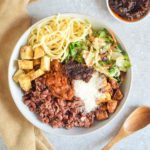
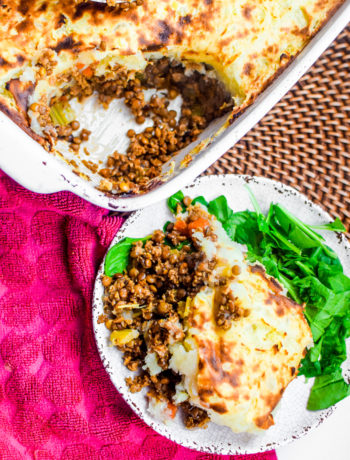
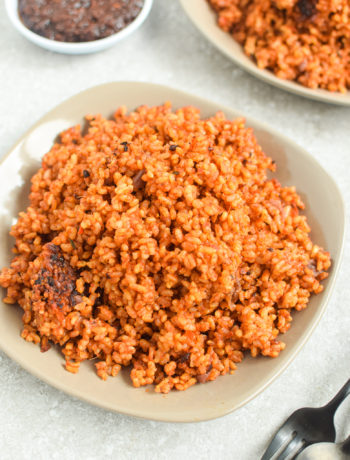
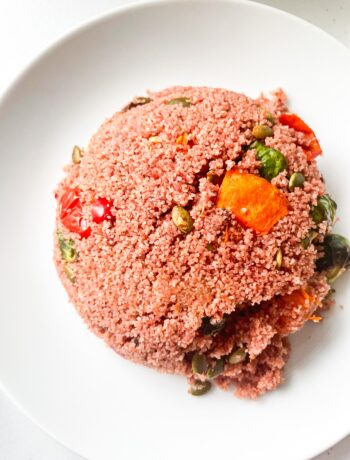
15 Comments
WAAKYE//VEGAN, OIL-FREE & HEALTHY - Vegan Recipes
August 12, 2017 at 1:14 am[…] Full recipe can be found on my blog. WAAKYE//GHANAIAN RICE AND BEANS […]
Nicole
October 1, 2020 at 9:55 pmI really enjoyed making this recipe and it was a great option for meal prepping! So tasty 😊
Sharifah Tafari
October 25, 2020 at 5:54 pmI love rice & beans! Thanks for sharing this recipe. It looks very tasty.
Four Essential Ghanaian Rice Dishes - The Canadian African
April 5, 2021 at 11:16 pm[…] WAAKYE […]
Frequently Asked Questions - The Canadian African
November 7, 2021 at 5:01 pm[…] Waakye […]
Aude
May 22, 2022 at 5:59 pmI have tried your recipe, it is perfect, thank you! Instructions are clear and waakye came out perfectly cooked.
30+ Traditionelle afrikanische Essensrezepte - kochstubenprofi.de
October 8, 2022 at 10:41 pm[…] 13. Ghanaischer Reis und Bohnen (Waakye) […]
Fall Fonio Salad - The Canadian African
October 24, 2022 at 7:36 pm[…] Fall is my favourite season for food. I find that there is more variety to having both fresh ingredients as well as well fall root vegetables and hearty greens. This Fonio salad allows you to incorporate all your favourite fall produce into a recipe that is perfect for any fall dish. As my blog is dedicated to showcasing African ingredients and foods, this recipe is the perfect way to incorporate one of my favourite gluten-free African grains– fonio and my favourite natural food colour additive — sorghum stems. If you want to learn all about fonio, please check my blog post on fonio (click here) and more details on the sorghum stem here (click here) […]
Spice Crusted Tofu (Vegan) - The Canadian African
November 26, 2022 at 2:03 am[…] Waakye […]
Vegan Shito (No Fish or Shrimp) - The Canadian African
December 2, 2022 at 12:43 am[…] Waakye […]
Beyond Ghana Jollof: 10 Surprising Ghanaian Culture Facts That Will Amaze You - Latest and credible news in ghana
February 18, 2023 at 7:36 pm[…] Waakye is a rice and beans dish often served with spaghetti, fried plantain, and meat or fish stew. Kenkey is a cornmeal dish that is similar to banku, and is often eaten with soup, stew, or grilled fish. […]
thecanadianafrican
December 3, 2024 at 12:41 pmdid you use the baking soda or the sorghum stems?
Lea C
January 4, 2025 at 12:16 amThis waakye is amazing!! I plan on making the tofu Yassa tomorrow to go with it!! I will freeze portions of it in my souper cubes for when I make shito so I can eat it with that and waakye stew. This is so delicious! Thank you Afia! 🙂
thecanadianafrican
January 4, 2025 at 12:45 amthank you so much for trying this recipe!
Lea
January 4, 2025 at 12:19 amAbsolutely delicious! Will definitely make again!